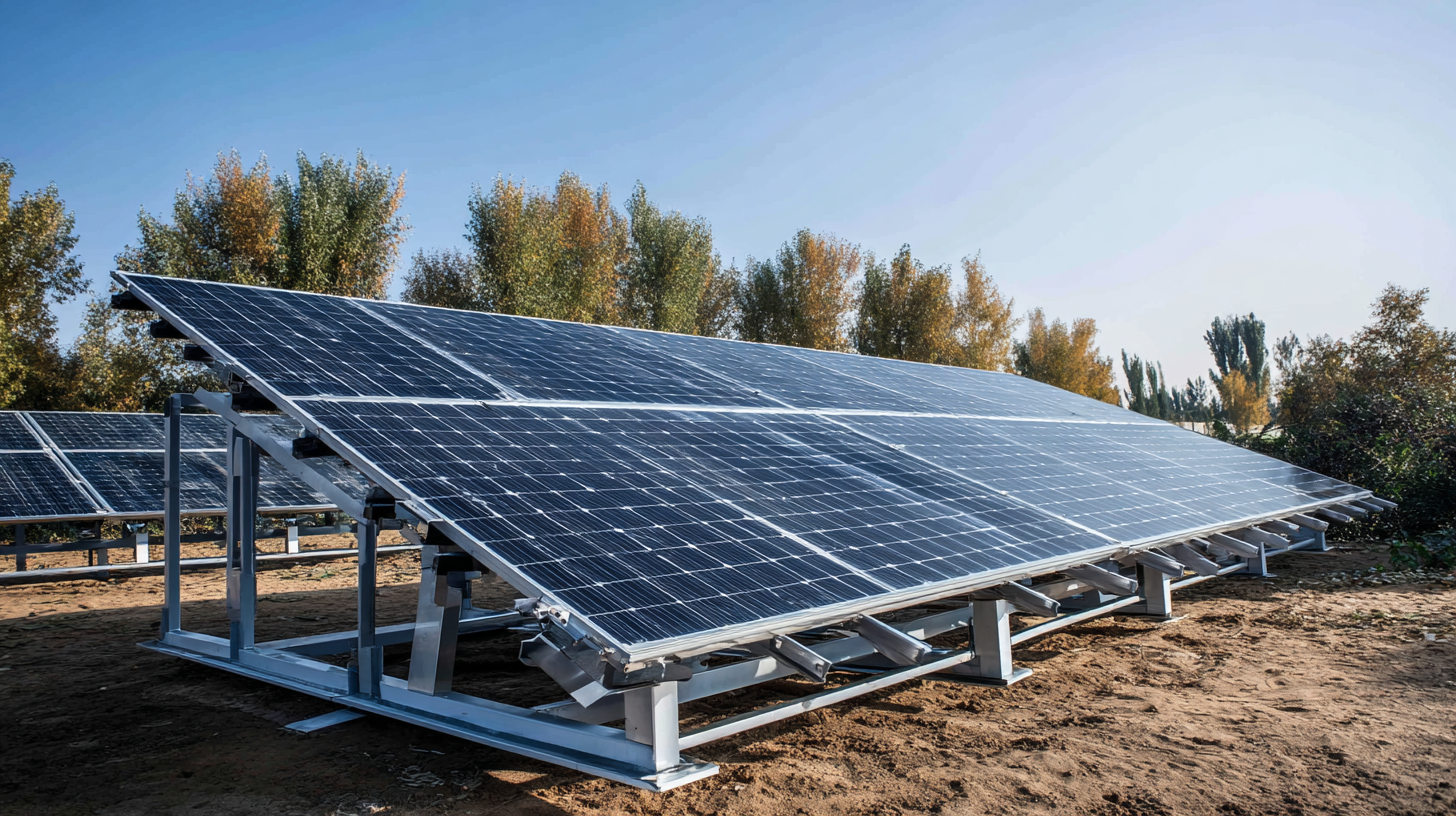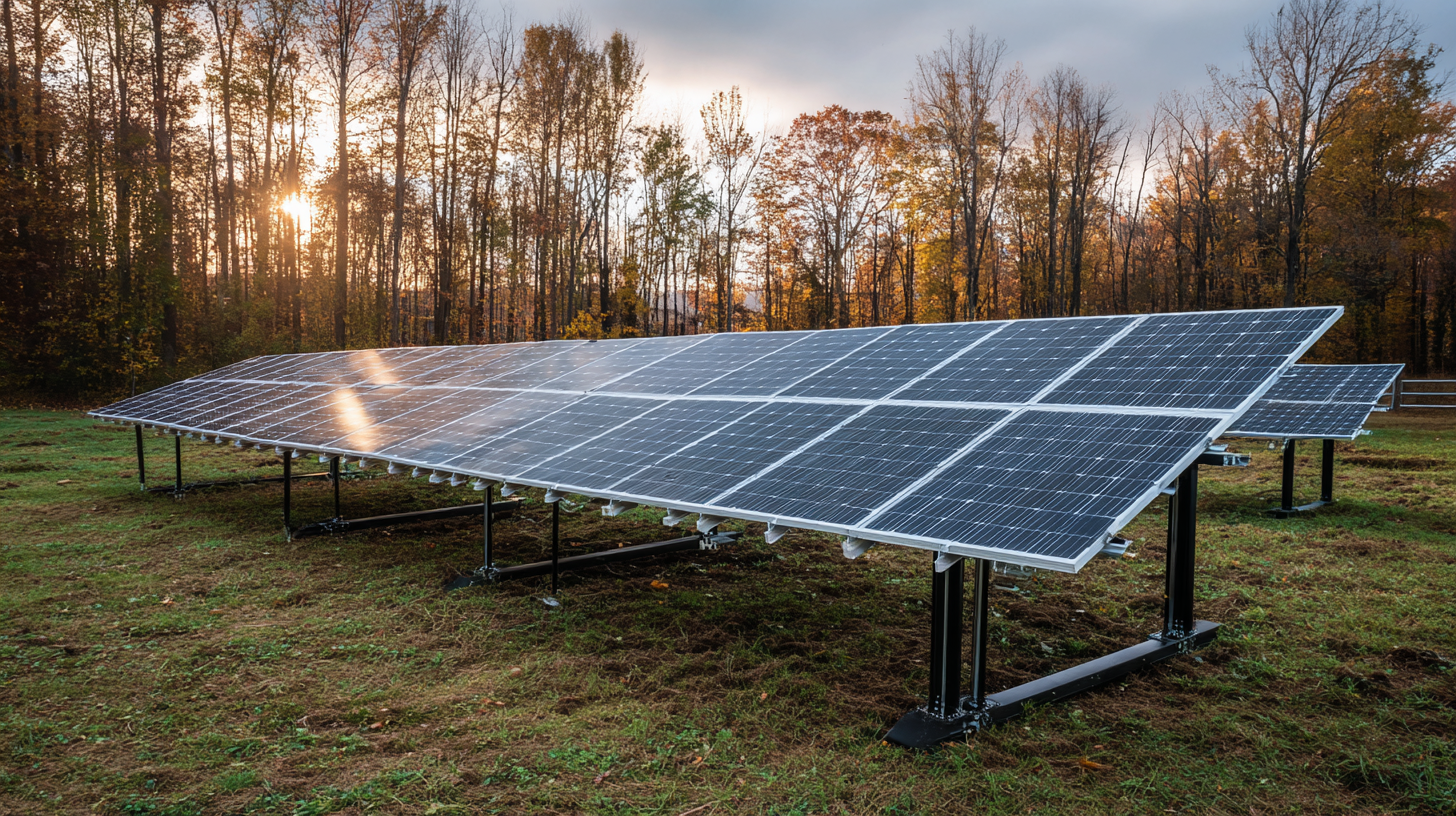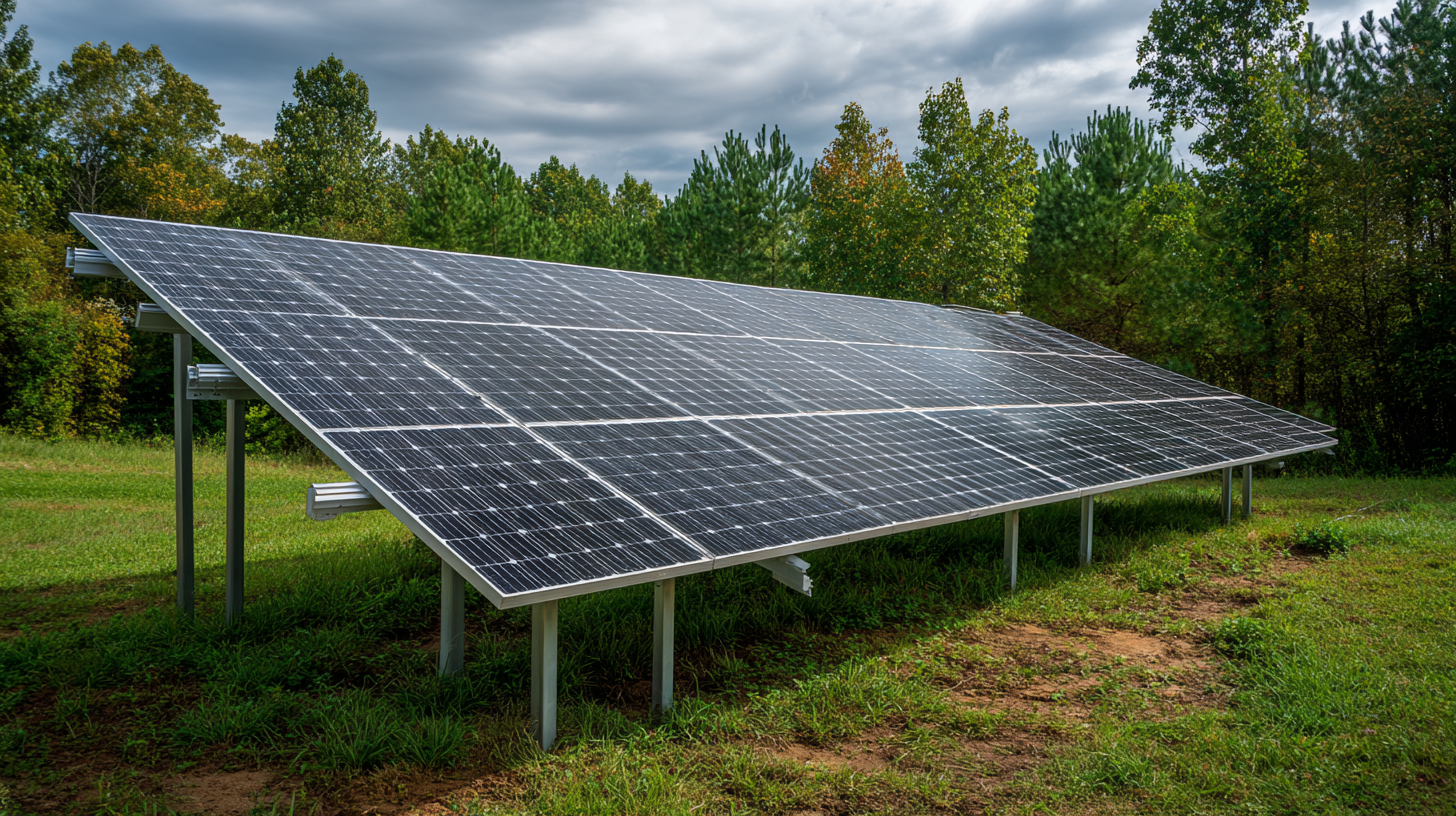
Blog
How to Choose the Most Effective Solar Panel Mounting Structure for Your Needs
As the demand for renewable energy sources continues to rise, selecting the most effective solar panel mounting structure becomes crucial for homeowners and businesses alike. This blog aims to guide you through the essential factors to consider when choosing the right mounting system for your solar panels. With insights into recent market analysis and projections for 2025, we will explore various types of mounting structures, including rooftop, ground-mounted, and adjustable options, while discussing their impact on installation, maintenance, and energy efficiency. Understanding the features and benefits of each type will empower you to make an informed decision that aligns with your specific needs and goals in harnessing solar energy effectively. Join us as we delve into the future of solar panel mounting structures and their role in optimizing renewable energy systems.

Understanding Different Types of Solar Panel Mounting Structures
When selecting the right solar panel mounting structure, it's crucial to understand the different types available, as they can significantly impact efficiency and installation costs. The three primary categories are fixed mounts, adjustable mounts, and tracking mounts. Fixed mounts are the simplest option, offering stability and low maintenance, making them ideal for residential setups. These systems are usually installed at a specific angle to maximize sunlight exposure throughout the year.
On the other hand, adjustable mounts allow for seasonal angle changes, optimizing energy capture during various times of the year. This flexibility is beneficial for solar energy systems located in regions with diverse sunlight patterns. Lastly, tracking mounts offer the highest efficiency as they follow the sun's path across the sky, adjusting in real-time. However, they come at a higher initial investment and require more maintenance. By assessing your space, budget, and energy goals, you can determine which solar panel mounting structure best suits your needs and maximizes your solar investment.

Key Technical Specifications to Consider for Solar Mounting Systems
When selecting a solar mounting structure, it's crucial to focus on key technical specifications that align with your specific needs. One important specification is the load-bearing capacity of the mounting system. Different structures are designed to support varying weights, so it’s essential to choose a mount that can securely hold your solar panels against potential wind and snow loads. Assessing local weather conditions and understanding your region's historical data can guide you in making an informed choice.
Another critical factor to consider is the material of the mounting structure. Common materials include aluminum, galvanized steel, and stainless steel, each offering different benefits in terms of durability and corrosion resistance. For instance, aluminum is lightweight and resistant to rust, making it an ideal choice for residential installations, whereas galvanized steel may provide superior strength in harsh environments. Additionally, it's wise to evaluate the adjustability of the mounting system. Fixed mounts may work well for some situations, but tilt or tracking systems can optimize solar exposure throughout the day, enhancing the overall efficiency of your solar energy system.
Solar Panel Mounting Structure Comparison
Evaluating the Materials Used in Solar Panel Mounting Solutions
When selecting the most effective solar panel mounting structure, it is imperative to evaluate the materials used in these systems. Different types of mounting structures, such as fixed tilt and single-axis tracking systems, utilize various materials that influence their durability, cost, and environmental impact. For instance, mounting systems made from aluminum and galvanized steel are popular for their corrosion resistance and strength, ensuring longevity even in harsh weather conditions. However, emerging trends in sustainable building materials are prompting manufacturers to explore alternatives that enhance performance while minimizing the environmental footprint.
Moreover, the growing demand for solar PV systems coincides with increasing scrutiny on resource sustainability. The need for hybrid renewable energy systems, which might combine solar panels with wind or geothermal technologies, emphasizes the importance of using recyclable and eco-friendly materials in mounting structures. By focusing on materials that can be easily reused or recycled, stakeholders can significantly reduce the lifecycle impact of solar installations. As the industry continues to evolve, understanding the material properties and their implications on both performance and sustainability is crucial for optimizing solar energy solutions.
How to Choose the Most Effective Solar Panel Mounting Structure for Your Needs - Evaluating the Materials Used in Solar Panel Mounting Solutions
| Material | Durability (Years) | Corrosion Resistance | Cost (USD per Unit) | Weight (lbs) |
|---|---|---|---|---|
| Aluminum | 20 | High | 150 | 5 |
| Steel | 25 | Medium | 120 | 10 |
| Plastic Composite | 15 | Low | 80 | 4 |
| Galvanized Steel | 30 | High | 140 | 12 |
How Climate and Location Affect Your Choice of Solar Mounting Systems
When considering solar panel mounting structures, climate and location are paramount factors that can significantly influence your decision. For instance, areas with high wind speeds, such as coastal regions, require robust mounting systems that can withstand strong gusts. According to the NATIONAL RENEWABLE ENERGY LABORATORY (NREL), systems designed for high-wind environments can reduce potential damage and maintenance costs by up to 30%. Similarly, snow load considerations are crucial in colder regions; mounting systems should be engineered to handle the extra weight of accumulated snow, ensuring operational efficiency year-round.
Tip: Always check local building codes and guidelines regarding solar installations to ensure compliance and safety.
Moreover, the angle of solar panels has a direct impact on energy production. Locations with high solar insolation, such as southwestern states, benefit from steeper angles that optimize sun exposure (up to 30% more energy capture during peak hours). In contrast, areas with less sunlight might require adjustments or different mounting options to maintain efficiency.
Tip: Conduct a site analysis to determine the best tilt and orientation for your panels, taking into account seasonal sun paths and local shading.
Understanding these geographic and climatic variations is essential in selecting a mounting system that will not only protect your investment but also maximize energy output over time.

Cost-Benefit Analysis of Various Solar Panel Mounting Options
When considering solar panel mounting structures, a thorough cost-benefit analysis is crucial to determine the best option for your needs. Different mounting systems, such as fixed tilt, adjustable tilt, and tracking mounts, come with varying initial costs and performance efficiencies. For instance, while tracking mounts may offer higher energy output by following the sun’s path, they typically involve higher installation and maintenance costs. In contrast, fixed systems are more affordable and simpler to install but may lead to lower overall energy production.
Tips to consider when evaluating your options include assessing your budget and long-term energy goals. If immediate affordability is a priority, fixed tilt mounts may be the way to go. However, if you aim for maximum energy efficiency and can invest more upfront, tracking systems might yield better returns over time. Additionally, don’t forget to factor in the local climate and available roof space, as these elements significantly influence the effectiveness of your chosen mounting structure.
Always conduct a thorough comparison of the lifespans and warranties of different mounting options. Longer warranties often indicate higher quality. Look for systems that offer robust support and can withstand local weather conditions, ensuring you make a sound investment for your solar energy future.